
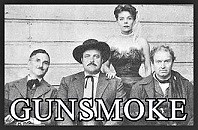 Gunsmoke (April 26, 1952–June 18, 1961) aired “Cain” on October 3, 1952 as the 24th of its 480 original episodes. This is the fourth episode of Gunsmoke we’ve showcased here, the first coming in early January of 2020, the second in June of 2020, and the third in late January of this year, 2021. Thus, a reprise from that initial offering of the basic history and background of this excellent radio program is in order for newcomers.
Gunsmoke (April 26, 1952–June 18, 1961) aired “Cain” on October 3, 1952 as the 24th of its 480 original episodes. This is the fourth episode of Gunsmoke we’ve showcased here, the first coming in early January of 2020, the second in June of 2020, and the third in late January of this year, 2021. Thus, a reprise from that initial offering of the basic history and background of this excellent radio program is in order for newcomers.
[Note: “Cain” can be found in the Radio Spirits collection The Round Up, pictured top left.]
The show took place during the post-Civil War era (circa 1870) in Dodge City, Kansas during the expansion and settling of the Old West. On radio William Conrad (1920-1994, photo lower left) played Marshal Matt Dillon. On television Marshal Dillon was played by James Arness. On radio Parley Baer (1914-2002) played Dillon’s “assistant” Chester Wesley Proudfoot. On television Chester was played for the first couple of years by Dennis Weaver. On television, Chester’s last name was changed from Proudfoot to Goode. On radio Howard McNear (1905-1969) played Dr. Charles Adams. On television Doc was played by Milburn Stone. On radio Miss Kitty was played by Georgia Ellis (1917-1988, photo lower right). On television Miss Kitty was played by Amanda Blake. While the radio program ran for a solid 10 years (1952-61), the television program ran for 20 years (1955-75) and overlapped with its still airing counterpart on radio, and until programs airing after the television show’s demise, television’s Gunsmoke ranked as the longest running original live action (as opposed to animated) show of all time.
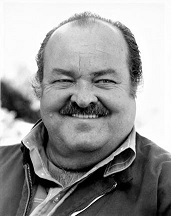
 As to the origin of Gunsmoke on radio, the story goes that in the late 1940s legendary CBS chairman William S. Paley, who was a fan of the Philip Marlowe detective series on radio, asked the head of programming to develop “a hardboiled Western” about a Marlowe of the Old West. Though an attempt was made, complications arose and the project was shelved. Enter producer Norman MacDonnell and writer John Meston a few years later, who discovered the shelved project while in the process of creating an adult Western of their own for radio (in contrast to radio westerns such as The Lone Ranger or The Cisco Kid, who were aimed primarily at a younger audience).
As to the origin of Gunsmoke on radio, the story goes that in the late 1940s legendary CBS chairman William S. Paley, who was a fan of the Philip Marlowe detective series on radio, asked the head of programming to develop “a hardboiled Western” about a Marlowe of the Old West. Though an attempt was made, complications arose and the project was shelved. Enter producer Norman MacDonnell and writer John Meston a few years later, who discovered the shelved project while in the process of creating an adult Western of their own for radio (in contrast to radio westerns such as The Lone Ranger or The Cisco Kid, who were aimed primarily at a younger audience).
Gunsmoke on radio was a critical and popular success, noted for its realism and willingness to tackle adult and/or explicit subject matter such as opium addiction, scalpings, and massacres among other adult situations and themes (Marshal Dillon, having saved a prostitute from rapists in one episode, was yet unable to dissuade her from her chosen profession). The show was not all dark and somber, however, and evolved over time into a genuinely warm and sometimes humorous “celebration of human nature.” To reinforce the realism of the excellent scripts and often times gritty subject matter, the show also rose above others due to its special effects, which brought the listener even deeper into a dusty, crowded, Dodge City, where children could be heard playing a block away, or a dog barking nearby. It was a total immersive experience for radio, and solidified the claim of the program as the first truly adult Western series on radio.
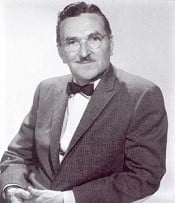
 Those familiar with the original The Andy Griffith Show (1960-68) on television will recognize the names of Parley Baer (photo at left) and Howard McNear (photo at right). They would find themselves teamed up again as they were on radio’s Gunsmoke, with Baer playing the character of Mayberry Mayor Roy Stoner, and with McNear playing Floyd the Barber. Sometime shortly after he was cast as this recurring character McNear had a stroke, almost completely paralyzing the left side of his body. He took more than a year off, but when asked by Andy Griffith to return he rejoned the cast in 1964, though camera angles and his poses had to be adjusted for. His condition deteriorated so much that after time he could no longer remember his lines. Frustrated, McNear left the show in 1967. He passed away from complications of pneumonia following another stroke on January 3, 1969. Parley Baer, his longtime friend from both Gunsmoke on radio and The Andy Griffith Show on television, read his eulogy.
Those familiar with the original The Andy Griffith Show (1960-68) on television will recognize the names of Parley Baer (photo at left) and Howard McNear (photo at right). They would find themselves teamed up again as they were on radio’s Gunsmoke, with Baer playing the character of Mayberry Mayor Roy Stoner, and with McNear playing Floyd the Barber. Sometime shortly after he was cast as this recurring character McNear had a stroke, almost completely paralyzing the left side of his body. He took more than a year off, but when asked by Andy Griffith to return he rejoned the cast in 1964, though camera angles and his poses had to be adjusted for. His condition deteriorated so much that after time he could no longer remember his lines. Frustrated, McNear left the show in 1967. He passed away from complications of pneumonia following another stroke on January 3, 1969. Parley Baer, his longtime friend from both Gunsmoke on radio and The Andy Griffith Show on television, read his eulogy.
“Cain” is the sad but thoroughly engaging story of an entertainer near the end of his days. Cain has been making a living playing his guitar and entertaining those riding up and down the Mississippi on riverboats. He is now heading west to drier climates in the hope of extending his life, for he has contracted consumption (now known as tuberculosis) and has but a short while to live. While stopped over in Dodge City, Doc has confirmed his diagnosis and for the short time Cain visits Dodge he is beloved by everyone for his mild mannered demeanor and ability to bring smiles to everyone’s faces with his guitar playing. But when Cain buys a gun and Chester shows him how to use it, everyone is caught by surprise. Instead of continuing his journey west to Tombstone, AZ and leaving on the stage as promised, Cain reveals his true intentions, which are at odds with everything people have come to know about this friendly, quiet musician. What we learn in a most unusual and surprising manner is but one of the many dark passions that drive a man to an extreme that in this case ends by revealing a very different and unexpected interpretation of the phrase, “the mark of Cain.” This one is definitely worth a listen.
Play Time: 29:47
{After listening to this Sunday evening episode of Gunsmoke, set in the wild west of the new American frontier, the neighborhood gang nevertheless sought more action and adventure set in (as a future television program would characterize it) “the final frontier.” So our young space cowboys gathered at the corner newsstand the next day after school and, after careful consideration, settled on the following pulps: Astounding Science Fiction (1930-present, now Analog) was an automatic buy, especially so since this issue contained Part 1 of 3 of Isaac Asimov’s The Currents of Space. Among several other stories, there were tales by Walter M. Miller, Jr. and James Gunn. ASF was a monthly in 1952. Galaxy (1950-80) proudly celebrated its 2nd anniversary with, among others, stories by none other than the now classic novella “Baby is Three” by Theodore Sturgeon, “Halo” by Hal Clement, and “Zen” by Jerome Bixby. Galaxy was also a monthly in 1952. The Magazine of Fantasy and Science Fiction (1949-present) could very well have celebrated its 3rd anniversary, with its debut issue coming in the Fall of 1949. Deciding not to blow its own horn, it provided its readers instead with a wealth of stories, featuring (among others) the likes of Michael Shaara, a new Gavagan’s Bar story (“The Black Ball”) by L. Sprague de Camp & Fletcher Pratt, a short story by the magazine’s co-founder Anthony Boucher, “The First,” and work by Miriam Allen deFord, Leslie Charteris, and Margaret St. Clair. With a trio of other stories this issue showcased quite a lineup of top shelf talent. After beginning the year as a bi-monthly, F&SF transitioned to a monthly with its August 1952 issue. Unbeknownst to them at the time, the neighborhood gang had hit a home run with these specific SF pulps clutched in their sweaty hands, as they made their way home from their home away from home, the friendly hideaway for many a curious youngster, the corner newsstand, today mostly a thing of the past.}
[Left: Astounding, Oct. 1952 – Center: Galaxy, Oct. 1952 – Right: F&SF, Oct. 1952]
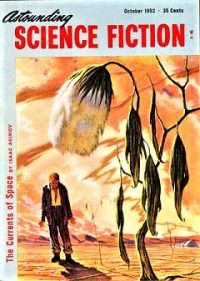
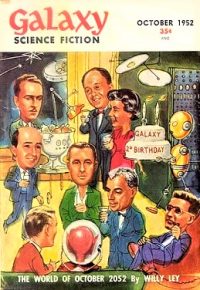
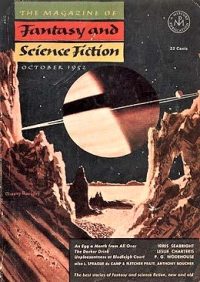
To view the entire list of weekly Old Time Radio episodes at Tangent Online, click here.